2013 Uber Scooter Shootout – Video

BMW C650GT vs. Honda Silver Wing vs. Kymco MyRoad 700i vs. Suzuki Burgman 650 ABS
Here at MO we like scooters, especially big ones. Laugh if you want, but when it comes to practical, versatile, comfortable, and fun two-wheeled transportation, scooters often get overlooked. Well, we’re here to give them their fair share. What other motorcycle will take you to the grocery store, have room for the box of cereal, gallon of milk and six-pack of beer you just bought, then welcome the chance to take the twisty road back home – all while having your left hand free to sip a latte?
Here, we’ve gathered the biggest heavy hitters in scooterdom currently available in the United States capable of doing just that. They are: the BMW C650GT, Honda Silver Wing, Kymco MyRoad 700i and Suzuki Burgman 650 ABS. The task, then, is to see where these Uber Scooters shine and where each falls short.
Starting in the engine department, these four parallel-Twins are remarkably evenly matched, and each can easily haul to 80 mph (or more) quicker than many cars on the road. The Kymco and its 699.5cc engine might be the biggest surprise. Kymco claims 59 hp and 46 ft.-lb. of torque, which is one horse and three ft.-lb. less than the 647cc BMW.
We thought it would flex its muscle in dominating fashion. Instead, FNG Evans Brasfield felt it was sluggish off the line, while Head Cheese Kevin Duke felt it to be excessively vibey. That said, both Kevin and minivan editor Tom Roderick praised the torque and passing power, with Duke saying, “it feels almost like a diesel, with buckets of low-end torque.” We’re impressed at Kymco’s effort at a big-bore engine, but all of us wished for more refinement – a theme that would be carried throughout this test.
At the other end of the spectrum, Honda’s smallest-in-class 582cc mill tried its best to punch above its weight. With a claimed 49.6 hp and 39.8 ft.-lbs., “acceleration potential is likely quick enough for the majority of riders interested in such a machine,” says Duke, “but it’s outgunned in this relatively hi-po group.” Still, it emits a pleasing exhaust growl that could fool its rider into thinking they are going faster than they really are. Ultimately, it’s likely that if you’re looking at the Silver Wing, zero-to-60 and quarter-mile times aren’t a priority.
Scooter Power For Cars
The 647cc parallel-Twin in the C650GT can also be found in one of the most advanced cars on the road, BMW’s new i3 automobile. Designed for pure electric use, with a 22-kWh battery providing as much as 125 miles of range, the i3 can be equipped with the C650’s engine to extend range beyond battery-storage limitations.
In this application, the trunk-mounted engine is rated at 33 hp and is used solely as a generator to inject juice into the batteries. The car’s AC electric motor boasts 170 hp and 184 ft-lb, which should be enough to propel the carbon-fiber-infused chassis to 60 mph in about 7 seconds.
Adding the C650’s engine to an i3 will add $3850 to the car’s $42,275 price tag. If you ask us, you should just buy the C650GT.
Splitting the difference between the Honda and Kymco are the Suzuki and BMW at 638cc and 647cc, respectively. As one would expect from BMW, the C650GT with its class leading 60 hp and 49 ft.-lb. (claimed) is incredibly refined, with its power delivered smoothly. Under normal circumstances the CVT transmission operates in harmony with the engine, but Duke noticed some slight hesitation from a stop. “The engine revs at launch but the clutch doesn’t fully bite, limiting its initial pull,” he says. “But then the CVT clutch bites harder and revs fall just below the snappy part of its powerband before finally delivering its full thrust.” But that was his only engine-related gripe.
At 638cc, the Suzuki Burgman 650 ABS doesn’t feel like it has any disadvantage to the bigger engines in the pack. Packing a claimed 54 hp and 45 ft.-lb., this sensation is bolstered by the remarkably refined CVT transmission, which benefits from a complete update with new materials and electronic solenoid activation for more precise and efficient operation – all part of the Burg’s 2013 revamp, covered here. It boasts a couple of class-exclusive abilities: a choice to switch between Eco and Power modes and, most interesting, being able to operate in a manual mode that mimics a six-speed gearbox. “It ensures, when desired, that the engine is placed in the fat part of its powerband rather than waiting for the CVT to catch up to your demands,” says Kevin. “It also removes some of the freewheel effect when entering corners.”
“Although I know it’s just a software trick, I liked the ‘thumb shifting’ feature,” says Evans.
“Being able to hold one gear through a series of corners gave me the feeling of more control of my entry speed through engine braking than the others.” While a neat feature, we wish the shift buttons were operated with the index finger and thumb.
Eco and Power modes live up to their billing, too. The former understandably dulls power by keeping the CVT in “high gear” to keep revs down and boost MPG (we averaged 46 mpg in a mixture of riding conditions). It’s an effective feature during average riding, but Power mode is the place to be when you really want to pile on the coals. It keeps the revs higher for near-instant reaction to throttle inputs. “Off-the-line acceleration is the best of the bunch, even beating the BMW away from a stop,” Kevin observed, “And the Power mode also adds a useful amount of engine braking.”
| Make/Model | MPG (Avg.) |
|---|---|
| BMW C650GT | 45.8 |
| Honda Silver Wing | 47.1 |
| Kymco MyRoad 700i | 44.1 |
| Suzuki Burgman 650 ABS | 46.0 |
However, this technology doesn’t come without downfalls. In this case weight and price. At 613 lbs., the Burgman is the second-heaviest scoot, and with a starting price tag of $10,999, it’s the most expensive ride of the bunch. Which then begs the question: Is it worth it? We all appreciate the technology behind the innovative CVT, some more than others, but Tom provides an interesting perspective about manually changing gears on a scooter. “I like scooters for their ease of operation. If I want to shift gears I’ll ride a motorcycle. I also wonder how many Burgman owners will actually utilize the electronic shifting function on a regular basis.”
Considering their quasi sport-tourer status, these uber scoots all provide the comfortable semi step-through seating position that places the rider in a La-Z-Boy posture rather than the cowboy-like saddle-straddle of a conventional motorcycle. From here, however, the four contestants start to differentiate themselves from the others.
Individual Video Reviews
With the tallest seat height in this class at 31.7 inches (two inches taller than the Honda and Suzuki, one inch taller than the Kymco), the BMW C650GT is a challenge to mount for those with stubby legs. Even Brasfield noted some difficulty with the C650.
“I have a 32-inch inseam, and I couldn’t flat foot on the BMW,” he says. Fellow tall guy, Roderick, echoes these sentiments noting, “The biggest knock against the C650 is its ridiculously tall seat height.” Conversely, the Suzuki’s legroom is only marginally less than the BMW, but its seat is two inches lower and features an adjustable backrest the others can’t claim. This allows riders of various sizes to feel comfortable and flat foot with greater ease.
Once moving, the BMW proudly displays its comfort amenities. There’s enough legroom with the angled floorboards to allow our legs to stretch fully, lounge-chair style, when cruising. “I liked the relationship between the seat and the floorboards,” Evans comments. “My legs were in a much more comfortable bend, particularly when compared to the Kymco.”
Only the BMW and Suzuki come equipped with electronically adjustable windscreens, but the C650’s screen was favored by our testers over the Burgman’s for its greater height variance and its stability at speed. In its highest setting, I found it deflected wind over my helmet and around my torso – handy for chilly rides. Kevin preferred the overall wind protection of the Burgman and its wider fairing and adjustable windscreen “even if its windshield can’t be adjusted as high as the BMW’s, which, for me, provides an unwelcome backdraft in its highest position.”
Speaking of chilly, our C650 came equipped with optional heated grips and heated seat for both rider and passenger as part of the Highline Package, adding $605 to its $9990 base price. They were a godsend during our night ride in 28-degree weather, and even with the options, the BMW is still $400 cheaper than the base Suzuki. Heated grips ($249.95) and seat ($499.95, for rider only) are options on the Burgman, but they raise the price just shy of 12 grand ($11,748.90), $1,153.90 more than the Beemer.
While the $9,699 Kymco doesn’t boast frills like an adjustable screen or heated components, its seat is claimed to be an inch lower than the BMW (30.7 inches). This may seem like a benefit, but the 700i has the widest saddle of the lot, which makes flat-footing difficult. The Kymco gets further demerits from Duke, who comments, “Its long-day comfort is impaired by its forward-sloping rear section where it grabs pants uncomfortably and raises them higher on your waist.”
Things get worse for the MyRoad, as the taller testers complained of cramped riders quarters. There were also complaints of an inferior backrest, which, when combined with the limited leg room, meant the Kymco was “uncomfortable after only an hour ride,” Roderick says.
The $9,270 Honda’s ergonomics are a mixed blessing, feeling cramped front to rear for taller riders. But, Tom notes, “For anyone petite of stature and concerned about managing these beasts at stop lights or during slow parking lot maneuvers, the Silver Wing offers the lightest curb weight (541 lbs) and one of the lowest seat heights.” And despite the Silver Wing’s fixed windscreen, we found it still provides decent wind protection.
As quasi sport-tourers, we also took each through winding roads to destinations unknown, all while carrying everything we’d need onboard. It’s here where each of the scoots impressed, but one really stood out above the rest.
Trudging along in the city or on the freeway, the ride quality on all the scoots seemed adequate. All provide rear preload adjustment, and we liked the soft suspension settings on the Honda for general use. “It’s nice around town and on smooth roads,” Tom notes. Initial impressions of the Burgman leaned toward harshness on the highway, but lessened after some fidgeting.
Meanwhile, the C650 impressed with its composure. “The BMW seems to have negotiated the fine line between taut handling and downright harshness,” Evans observes. Ride quality bordered on the limits of what we’d accept for general cruising, but considering our four tester’s penchant for twisty roads, this was an acceptable compromise for the sport riding that was to come.
The surprise of the group was the Kymco. Despite its three-way, electronically adjustable suspension settings, it was underwhelming to say the least. “I was looking forward to experiencing the joys of electronically adjustable suspension on the Kymco but was mostly frustrated with it,” says Duke. “It was surprisingly harsh on its softest setting, so there was no reason to adjust it firmer.” Things did improve once preload was relaxed a bit, but front-end harshness remained. “I’d blame it on excess high-speed compression damping.”
Tom continues, “The MyRoad’s electronically adjustable suspension would be a huge advantage over its competition if it worked better than it does. It certainly doesn’t change the MyRoad from sportbike to Gold Wing, but it does minimally soften and stiffen the suspension damping.”
Granted, canyon carving isn’t what most would look to do with one of these four scoots, but your four testers aren’t like most people. Spurred by Tom’s initial impressions of the BMW C650GT and C600Sport at their launch and his desire to test the limits of lean angle, we ventured to the nearest curvy roads to check out their sporty abilities. What we found was truly surprising – all four are sportier than you might think.
While definitely not sportbikes by any stretch of the imagination, “each bike responds quickly to steering inputs, but their long wheelbases lengthen turn-in rates,” says Duke. This was especially noticeable with the Honda. “The front turns first and then, after a moment’s pause, the rear follows,” notes Brasfield. With the lightest weight of the bunch, the Silver Wing is quick to respond to direction change, but, says Kevin, “For our sporty testers, the Silver Wing comes up short in performance.”
Jumping off the Honda onto the 613-pound Suzuki, the Burgman’s 72-pound weight difference over the Silver Wing is clear. Most of that weight is carried low in the chassis, however, and as Evans notes, “The Burgman’s handling was surprisingly good.” It’s not the quickest or sportiest of the group, and its low exhaust hinders its cornering clearance. Still, its handling is predictable and stable, leading Kevin to call its overall dynamics “very fluid.”
The Kymco was again a surprise. It weighs the most (608 pounds, dry), and you can feel it while riding, “but it displays a surprising amount of agility on a twisty road,” Duke says. “It offers quicker turn-in responses than the sweet-handling BMW and a sharp, flex-free chassis.” Praise ends there, as the impressive handling is offset by a lack of ground clearance. The centerstand touches down quickly on the left, while on the right Evans discovered, “the canister touches harshly, unsettling the rear.”
But when it comes to twisty road performance, there’s just no denying the BMW is the king of the crop. Graced with 15-inch wheels at both ends wrapped in Metzeler Feel Free tires, Kevin says, “Without question, the Beemer is the bike to be on if you enjoy sport riding.” Brasfield notes, “I preferred the BMW’s steering because if felt more like a full-sized bike.” The C650GT’s suspension welcomes canyon carving, and the chassis is equally well suited to the task. The Metzeler tires inspire loads of confidence, and you’ll be going at a serious clip before dragging hard parts.
“With nearly unlimited cornering clearance, the BMW makes short work of twistier roadways, leaving its competitors scraping hard parts at slower speeds,” says Tom. We were so amazed by the BMW’s sporting ability, we seriously considered taking the scoot to a trackday. In fact, it’s an idea we still might try …
Taking these scoots out of their elements and into the canyons was a major highlight to this test. Focusing back on reality and the practical aspects of each, we turn to storage capacity. Here, the BMW leads the way with 60 liters of underseat space. The Honda is next at 55 liters, followed by the Kymco and Suzuki, each with 50 liters. Each could swallow at least one full-face helmet, with the BMW, Suzuki, and Kymco able to eat two medium full-face lids. Surprisingly, despite having the second-most storage space, the Silver Wing’s underseat area is shaped in a way that prohibits it from accepting two full-face lids.
Conversely, with the smallest amount of space, cameraman Brasfield praised the Burgman’s storage, saying, “It has tons of room under the seat. I could fit a 300mm 2.8 lens, a camera fanny pack, cleaning supplies and an extra face shield in there!”
All of the scoots feature small fairing compartments for small items like keys, phones, or wallets. The Kymco loses points for featuring only one fairing compartment, while the others have at least two. Our particular Silver Wing had a single lockable compartment with a dummy opening which appears to be sized right for a DC power outlet,but our tester didn’t come equipped with the accessory and neither is one listed on Honda’s website.
The rest of the bunch come with outlets, though the Kymco’s is located under the seat. Its location in the BMW and Suzuki, deep inside one of the fairing compartments (the Burgman’s is lockable), allows access without the need to dismount. Overall, however, we scored the BMW’s underseat space the best, its nearly 60-liter capacity (59.5 liters) more than enough to carry whatever we needed for a long ride, though it does get a knock for not having a lockable fairing compartment. The Burgman was a close second, followed by the awkwardly shaped and/or less cavernous compartments for the MyRoad 700i and Silver Wing.
Other general observations from the road: All four feature ABS, with the Honda’s a linked system. The Honda is also the only one void of a second front disc and adjustable levers. Speaking of which, the closest position on the Kymco’s levers was still a stretch for our fingers, though the MyRoad gets points for having radial brakes that work well. Rear ABS activates sooner than we’d like on all the scoots, and all four will halt with a generous squeeze, but the biggest difference is the “lack in feedback we’ve grown to appreciate on modern sportbikes,” says Duke.
Three of the scoots allow fuel tank and underseat storage areas to be opened via a series of turns with the ignition, though the Kymco’s system seems overly complicated to navigate. The Honda was the only one requiring the key to be removed from the ignition for refueling and underseat access.
Mirror placement was another oddity for these scoots. Both the Kymco and BMW units are buzzy and placed at an odd angle, making rearward visibility limited. Regarding the Kymco, Evans says, “The mirrors are almost unusable on the freeway.” Honda’s mirrors appear to be from a 1990’s parts bin, as they are simply plain stalks screwed in to the bars. But they work and provide decent rearward view.
Most impressive is the Burgman’s mirrors. Incorporated low into the bodywork, the view behind is better than the rest. Even neater is the ability to have the mirrors fold in at the push a button – handy when splitting lanes or parking in tight spaces. “Inarguably the best rear view mirrors of the bunch and they electronically retract too!” exclaims easily impressed editor Roderick.
We’re disappointed none of the quartet features cruise control or self-cancelling turn signals, as both seem like a no-brainer for, according to Duke, “machines meant to ease use on two wheels.”
All four provide parking brakes to ensure the scoots don’t go rolling away when parked, but the C650GT cleverly activates each time the sidestand is lowered. “I absolutely love that the BMW’s parking brake is attached to the sidestand instead of being a separate function as it is on the other scooters,” says Roderick. Indeed, the rest employ a pull handle either below the fairing or beside the rider, with the Kymco requiring an extra strong tug to release.
Winners and Losers
These big-bore scoots could have been incredibly boring interpretations of actual motorcycles, or they could have revealed an underappreciated sector of the market. In our minds, we think it’s the latter. Of course traditional motorcycles occupy a huge place in our hearts, but we can appreciate the capabilities of super scooters. “All four provide twist-and-go ease of use, handy storage, and a performance envelope big enough to include light-duty sport-touring,” says Duke.
As with all tests, there must be winners and losers. Using our trusty MO Scorcard we ranked the four contestants in a variety of areas. Subjective rankings like engines and handling are combined with objective scores like price and weight to come up with our final results. Here now are our rankings.
Fourth Place: Honda Silver Wing
Due to its low price and weight, the Silver Wing scored highest in the objective categories of our scorecard, and these are major factors to consider if simple, reliable transportation that’s easy to maneuver is all you’re looking for. However, the Honda scored last in our subjective scores. But the fact is all the other models here are new or significantly updated. Meanwhile, the Silver Wing is 12 years old.
We liked the lil’ Wing’s around-town ride quality and its eagerness to change direction, but were disappointed with the flexy chassis and the fact we couldn’t fit two helmets under the seat despite having the second-largest claimed capacity. And we considered the lack of technology other than ABS a demerit in this relatively tech-rich field, but this may not apply to you depending on your wants and needs.
“At 583cc the Silverwing represents the smallest displacement in this group,” says Roderick. “But if you desire a freeway-legal scoot and don’t want to pay for the bells and whistles that increase the MSRPs of the others, the Silver Wing is for you.”
Third place: Kymco MyRoad 700i
According to Brasfield, the Kymco MyRoad 700i “feels middle of the road for this grouping.” That sentiment comes through in its overall third-place finish in this test. The 700i surprised us with features like electronic suspension, radial brakes, and lighter-than-expected handling. But it also fell short in its cramped rider’s quarters, low ground clearance, and substandard fit and finish, as highlighted by its vibey engine, slab-sided fairing, poorly designed mirrors and annoyingly loud turn indicators. “Small details,” Kevin notes, “but they detract from the bike’s intention to be a premium scooter.”
It’s not that the Kymco is a particularly bad scooter, but in fact, the field of premium scoots has upped the game in recent years. In many respects, the Kymco feels like a machine that came to market a tad too soon. Duke summarizes the MyRoad 700i perfectly, writing, “The MyRoad is a solid effort in this segment, but it’s relatively unrefined next to its challengers. Another six months of R&D – improving mirrors, turn signal-indicator noise and engine vibration – would’ve been time well spent.”
Second place: Suzuki Burgman 650 ABS
It didn’t take long before we realized this test would really come down to the Suzuki and BMW, as the two are simply more refined and offer more features. This is reflected in the significantly better subjective and aggregate scores. For those less concerned with sporty attributes, the Burg’ provides a sensible, tech-rich, and polished alternative. As Kevin explains, “the revamped Burgman proved to be remarkably effective in terms of its overall performance, especially its fluid and intuitive responses, its superior transmission, its ease of use, and its generous storage. If it handled a little better and had a greater amount of cornering clearance, it would likely be my preferred choice.”
Its handling/ground clearance disadvantage was a negative in the minds of our testers, but as our scores show, the Burg more than makes up for it in other areas. Ultimately, while we gearheads can appreciate the updates made to the transmission, it’s hard to explain the resulting high price tag to your average scooter buyer who couldn’t care less. At just one dollar shy of 11-large, before any accessories, that’s a rather large pill to swallow. Especially when matched with the BMW.
So large, in fact, we have no choice but to put it in second place.
First place: BMW C650GT
While the other three scooters definitely gave it a run for its money, the BMW C650GT proved to be top dog among the super scootering elite. Unlike the Suzuki, whose price ultimately overshadowed its performance, all four testers felt the C650GT managed the exact opposite. We expected a lot for its $10,595 as-tested price, and its sporty nature, healthy engine, cavernous storage, practicality, and comfy cockpit delivered.
If you don’t generally ride in cold climes, then the $9990 base price (without the heated grips/seats) is even more of a steal in this company. The C650GT scored highest in 10 of the 12 categories on the MO Scorecard, and during the course of our testing, all four riders pined for the BMW keys at each opportunity. Generally when that happens, the winner is a foregone conclusion. The BMW C650GT is no exception. It earns the title of Uber Scooter.

Troy's been riding motorcycles and writing about them since 2006, getting his start at Rider Magazine. From there, he moved to Sport Rider Magazine before finally landing at Motorcycle.com in 2011. A lifelong gearhead who didn't fully immerse himself in motorcycles until his teenage years, Troy's interests have always been in technology, performance, and going fast. Naturally, racing was the perfect avenue to combine all three. Troy has been racing nearly as long as he's been riding and has competed at the AMA national level. He's also won multiple club races throughout the country, culminating in a Utah Sport Bike Association championship in 2011. He has been invited as a guest instructor for the Yamaha Champions Riding School, and when he's not out riding, he's either wrenching on bikes or watching MotoGP.
More by Troy Siahaan




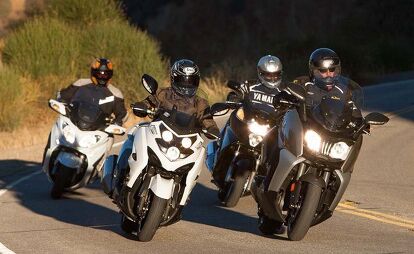



























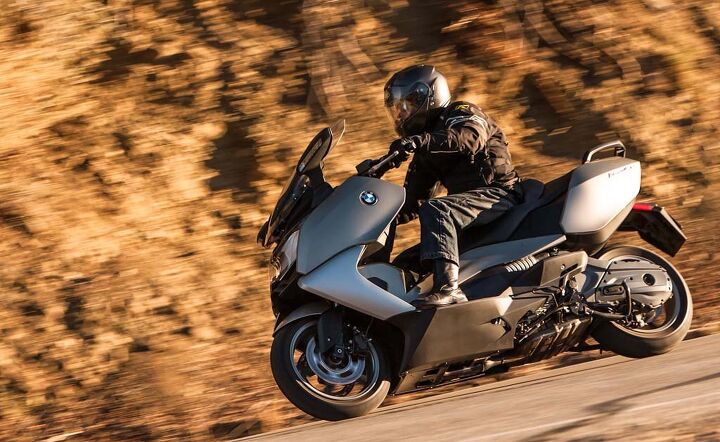






























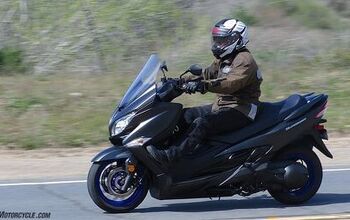



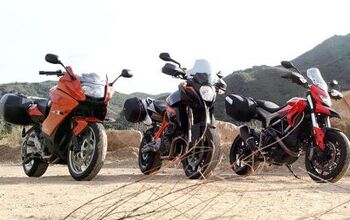

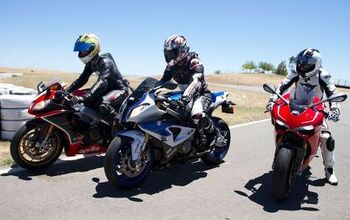
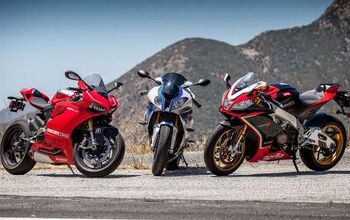









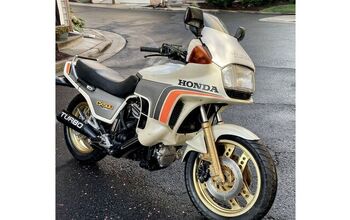
Comments
Join the conversation
I have owned a 2003 Honda Silver Wing 600 since 2009. All of the mentioned shortcomings can be fixed with simple upgrades/bolt-ons. I have replaced the stock CVT rollers with lighter Dr, Pulley sliders, replaced the fork springs with progressive springs running different-weight shock oil, a shorty windshield for summer and a taller one for winter, tires of the latest technology, and a large Givi trunk and some other mods. This is a really solid-running bike and does well for both commuting and long rides. I have driven it on 600+ mile days and it is comfortable and performs quite well. Aside from the CVT belt change interval at 18000 miles and the rear tire that won't last more than 5000 to 8000 miles the bike has been really inexpensive and low-maintenance. I have about 40,000 miles on it now and it's a keeper.
I was at a Bike Night and met a senior with a Burgman. He was a Gold Wing guy and dropped a few times and was pulling muscles. His wife wouldn't have that and the GW was sold and bought the Burgman. He is a real rider and has been tearing his Burger around and terrorizing squids. He was cool. It was first time that I didn't think these scooters were stupid.
As Americans are aging and millenials want a cheap and cool bike, the scooters may get an uptick in sales. They sell like mad in Asia and Europe. Maybe, it's scooter time, but, being a value northern yankee, I think that the price point have to come down a little.